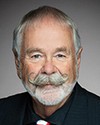Mr Speaker, I am very pleased to rise today to support Bill C-376 at second reading. This is the bill that would designate the month of April as Sikh heritage month.
New Democrats have long been supporters of multiculturalism and celebrating the diverse backgrounds that make up the Canadian mosaic. The designation of heritage months is one important way that the government can recognize Canadian diversity and the contributions made to Canada by specific communities. April is, of course, a very important month for Sikh communities, as it is the month when Vaisakhi is celebrated.
Vaisakhi, as we know it today, grew from the traditional spring harvest festivals in the Punjab. These celebrations came to be marked as specifically Sikh celebrations, when in the 17th century, Guru Gobind Singh established a formal order of committed Sikhs, the Khalsa panth, and consolidated the Sikh articles of faith, practice and community. This was nearly two centuries after its founding by Guru Nanak, thus not only demarcating Sikhs as a community within India but also establishing the Khalsa as the temporal authority for that community.
Far be it from me to lecture on Sikh theology, but it is interesting to note that Sikh theology urges the cultivation of improvement of both the individual self, which, by the way, has no gender in Sikh theology, but also demands that Sikhs serve the community around them. This brings about an integration of the spiritual and temporal worlds. Therefore, the Sikh community remains to this day a community that places a strong emphasis on service to the community.
New Democrats have a long history of pressing for recognition both of the struggles of the Sikh community in Canada and the contributions of that community to Canada. Carrying on the hard work of former NDP MPs Jasbir Sandhu and Jinny Simms, in early 2016, the member for Vancouver East moved Motion No. 35, which called on the government to officially apologize for the 1914 Komagata Maru incident, an apology finally delivered on May 18, 2016.
The first Sikh heritage month in Canada came about in Ontario as a result of the efforts of current NDP leader Jagmeet Singh in his capacity as MPP for Bramalea—Gore—Malton. Singh's private member's bill, Bill 52, an act to proclaim the month of April as Sikh heritage month in Ontario, received royal assent on December 12, 2013.
Now I want to turn for a moment to the story of the Sikh community in Greater Victoria and my riding, a history that stretches back more than a century.
The first people from India to migrate to B.C. were Sikhs from northern India, mainly the Punjab. It seems that Sikhs first travelled through B.C. as part of the British Empire army regiments that were travelling in 1897 on their way to Queen Victoria's Diamond Jubilee Celebration and again in 1902 for the coronation of King Edward VII. These Sikhs noticed the similarities of the British Columbia forests to those of the Punjab and the great opportunities that would be available in British Columbia, opportunities that they should have been free to take up by travelling to and settling in British Columbia as British subjects.
By 1906, there were about 1,500 Sikhs living in Canada, almost 90% of those in British Columbia. Most were retired British army veterans and their families. By 1910, there were an estimated 4,000 Sikhs living and working on Vancouver Island, many working in the forest industry, applying skills that they had gained in the Punjab before coming to Canada and many, in particular, worked in part of my riding along the Gorge Waterway in lumber mills.
In 1912, the Gurdwara Sahib or the Khalsa Diwan Society was established with about 100 members. They built a gurdwara on Topaz Avenue in Victoria, the same site it still stands on today. At the time, this was B.C.'s third Sikh temple. The gurdwara opened with a massive parade of more than 1,000 Sikhs from all over British Columbia.
By 1969, the original temple building had become far too small to accommodate the community, so it was demolished to make way for a new and larger temple on that same site. In 2012, the Khalsa Diwan Society of Victoria celebrated its first 100 years, a community that included more than 3,000 members. In the spring of 2018, after more than 100 years' break, Victoria hosted its first Vaisakhi Day Parade.
Racism and legal restrictions often stood in the way of Sikh progress in British Columbia. Fears of Asian immigration to B.C. among Anglo-Saxon residents escalated in the early years of the 20th century, often based on fears that economic competition would lower wages, but nearly always also fuelled by simple racism.
As British subjects, Sikhs should have been able to immigrate to Canada and live and work there on the same basis as any other subjects of the British Empire. Instead, in 1908, the Canadian government implemented by regulation a legal requirement that immigrants arrive in Canada via a “continuous journey”. This was specifically designed against South Asians as no shipping lines sailed directly from India to Canada.
The result of this was the Komagata Maru incident that I mentioned earlier when a ship chartered by a Sikh businessman to bring 376 immigrants to Canada was denied landing in Canada, and after a two-month standoff was forced to return to India. It was a tragic incident for which the government has now apologized. This occurred in a year when Canada accepted more than 300,000 immigrants from Europe and the United States.
Progress in ending restrictions and legal discrimination on the Sikh community was slow. It was not until the 1920s that the restrictions prohibiting immigrants from India from bringing their families to Canada was lifted and Sikhs were finally allowed to bring their wives and children to join them in Canada.
Many men from the Sikh community volunteered during World War II, and this fact of service was used to try and leverage equal treatment in Canada. In 1943, members of the Khalsa Diwan Society of Victoria joined others in presenting a petition to the British Columbia premier asking that South Asians be granted the right to vote. In 1945, those who had fought in World War II were granted the right to vote in provincial elections, and finally in 1947, all South Asian men were granted the right to vote in both federal and provincial elections in Canada.
Being on the voters list had another importance that we sometimes forget, because in British Columbia it was not just a matter of right. The voters list was also used in order to register people to practise professions like medicine, law and pharmacy. The voters list was also used as the basis for getting government contracts and licences to use public resources. This meant that Sikhs, being off the voters list, were prohibited from practising law, practising medicine, getting grants of forestry and business licences that other Canadians were able to get.
It was not until 1963 that immigration regulations were changed to eliminate racial discrimination based on the country of origin. Since then, the Sikh community in Canada, and in particular in British Columbia, has grown and thrived.
While the Sikh population makes up only around 3% of the population of my riding and only about 6,000 of the population of greater Victoria, the Sikh contribution to greater Victoria far outweighs the numbers in many areas. This is true, whether we are talking about respected small and large businesses, and here I would include the Jawl family who have built one of the most respected and successful development companies in greater Victoria, or whether we are talking about small builders of affordable and luxury homes, like Jasbir Bhandal in the Gorge area and on the Westshore in my riding. It is also true whether we are talking about professions like law or medicine, or whether we are talking about community services and charitable organizations.
I want to single out two community leaders in particular, both of whom I am privileged to call friends.
The first is Moe Sihota. Moe was the first Sikh elected to a federal or provincial seat anywhere in Canada. He represented the provincial riding that is the heart of my federal riding. He served until 2001. In 1991, he became the first Sikh cabinet minister anywhere in Canada, and served in a number of posts, including minister of labour, and later as minister of the environment where he presided over a major expansion of the B.C. park system.
I first visited the Khalsa Diwan Society of Victoria in 1985 with Moe Sihota and the then leader of the B.C. NDP, Bob Skelly, and have always felt very welcome at the temple in my many visits since there.
The second friend I want to note here is businessman Gordie Dodd, who is perhaps surprisingly better known for his community and charitable work and his absolutely, hysterically funny business commercials than he is for his substantial business success. This year, I was pleased to participate in the ninth annual Guru Nanak Walk for Peace, and I have now made it to all but two of those walks. This is a walk organized and run by the Sikh community and led by Gordie Dodd. The walk raises awareness of the importance of peace while also raising funds for community organizations. This year the recipient was the hospice society.
I am proud that the NDP is led by a Sikh, Jagmeet Singh, just as in the past we have been led by leaders from other faiths, like Tommy Douglas, who was as we know an ordained Baptist minister, and in British Columbia, Dave Barrett who was the first Jewish premier in Canada.
Sikh heritage month will encourage continuation of Sikh traditions within Canada and it will help make those Sikh traditions better known to other Canadians. The more we know about each other, the stronger we all make Canada.









